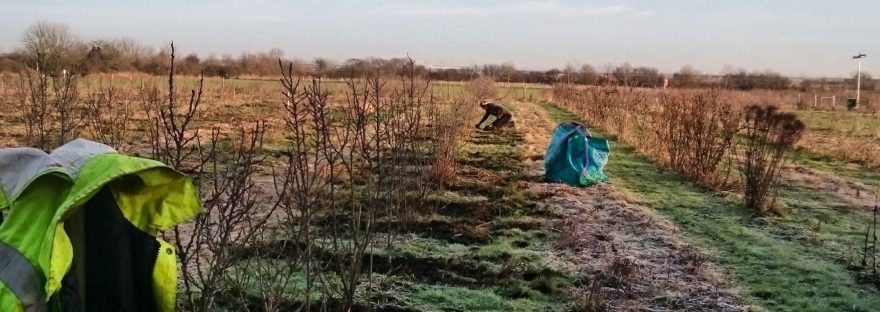January as usual is the month when we start to see some of our sea buckthorn plants breaking bud. Practically at the moment we are focusing on pruning all of the plants and we are aiming to complete this by the end of February. Alongside this the youngest plantation is being weeded and all plants that have been windblown will be given a stake to straighten them up. Wind has been a problem for smaller and younger plants that have not fully established roots. I think this also results from strong gusting winds that we have on the coast. Although it is not a big problem it is now important that these plants are straightened so they do not snag on the tractor and Ladurna cultivator – which excitingly should be arriving next week.
Pruning also allows a focus on which varieties are best suited to our farm. This year we will be ordering some more plants from Siberia (also exciting). Of the ten varieties on site we need to be focusing on those that yield best; have the right taste and size of berry; and have a more compact shape for ease of management. Interestingly our first discussions with buyers indicate that varieties with different distinctive taste may have different culinary uses, so our selection of varieties will need to be concentrating on best product suitability.
Product suitability was flagged up this week in articles from a French company – Superfruiticals, who have been working with sea buckthorn for ten years. Sea buckthorn’s anti-oxidant properties are often quoted. Superfruiticals are showing how the amino acids, fatty acids and vitamins all combine to produce a real anti-microbial activity that can be used as a natural preservative often doubling the shelf life of products. They have developed products for use as meat preservatives that replace E number ingredients that are also more cost effective than other natural alternatives such as rosemary. Sea buckthorn is so often quoted for its use in cosmetics and supplements but this shows another example of its versatility as a natural replacement for formulated ingredients used in food production.
Superfruiticals also mentions the potential in sea buckthorn leaf. The harvesting system that we are designing will create sea buckthorn leaf as a by-product. Its nutrient content is different to the berry but just as complex. Research has indicated its potential in animal feeds and this will be a subject for investigation this year.
David

